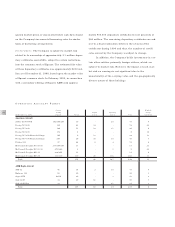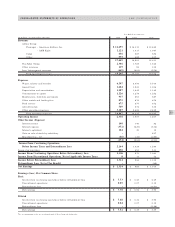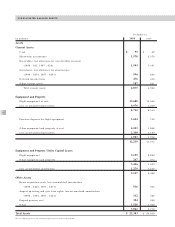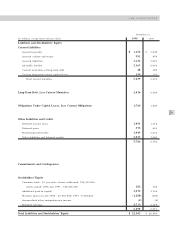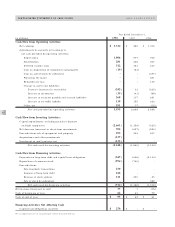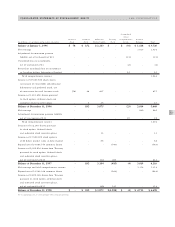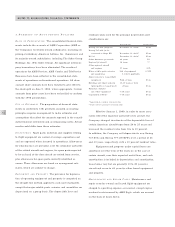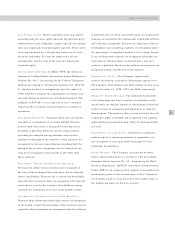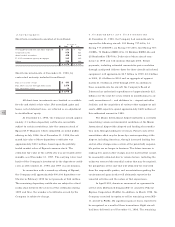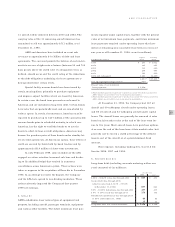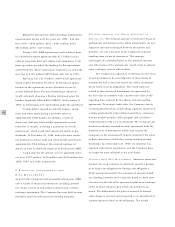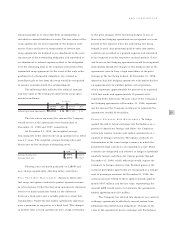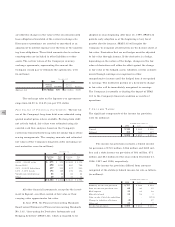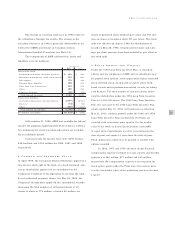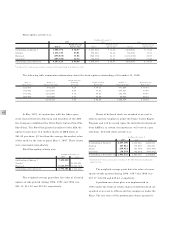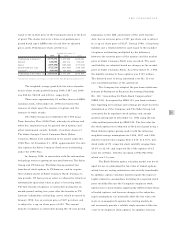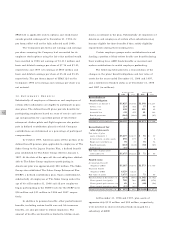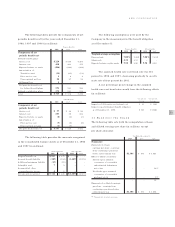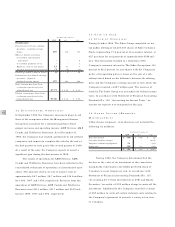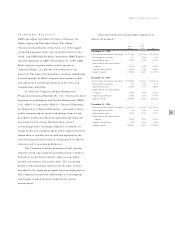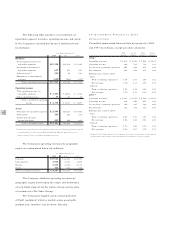American Airlines 1998 Annual Report Download - page 48
Download and view the complete annual report
Please find page 48 of the 1998 American Airlines annual report below. You can navigate through the pages in the report by either clicking on the pages listed below, or by using the keyword search tool below to find specific information within the annual report.
46
Maturities of long-term debt (including sinking fund
requirements) for the next five years are: 1999 - $48 mil-
lion; 2000 - $244 million; 2001 - $451 million; 2002 -
$83 million; 2003 - $47 million.
During 1996, AMR repurchased and/or retired prior
to scheduled maturity approximately $1.1 billion in face
value of long-term debt and capital lease obligations. Cash
from operations provided the funding for the repurchases
and retirements. These transactions resulted in an extraordi-
nary loss of $136 million ($89 million after tax) in 1996.
American has a $1.0 billion credit facility agreement
which expires December 19, 2001. At American’s option,
interest on the agreement can be calculated on one of
several different bases. For most borrowings, American
would anticipate choosing a floating rate based upon the
London Interbank Offered Rate (LIBOR). At December 31,
1998, no borrowings were outstanding under the agreement.
Certain debt is secured by aircraft, engines, equip-
ment and other assets having a net book value of
approximately $929 million. In addition, certain of
American’s debt and credit facility agreements contain
restrictive covenants, including a minimum net worth
requirement, which could limit American’s ability to pay
dividends. At December 31, 1998, under the most restric-
tive provisions of those debt and credit facility agreements,
approximately $2.6 billion of the retained earnings of
American were available for payment of dividends to AMR.
Cash payments for interest, net of capitalized inter-
est, were $277 million, $410 million and $520 million for
1998, 1997 and 1996, respectively.
6.FINANCIAL INSTRUMENTS AND
RISK MANAGEMENT
As part of the Company’s risk management program, AMR
uses a variety of financial instruments, including interest
rate swaps, fuel swap and option contracts and currency
exchange agreements. The Company does not hold or issue
derivative financial instruments for trading purposes.
NOTIONAL AMOUNTS AND CREDIT EXPOSURES OF
DERIVATIVES The notional amounts of derivative financial
instruments summarized in the tables which follow do not
represent amounts exchanged between the parties and,
therefore, are not a measure of the Company’s exposure
resulting from its use of derivatives. The amounts
exchanged are calculated based on the notional amounts
and other terms of the instruments, which relate to interest
rates, exchange rates or other indices.
The Company is exposed to credit losses in the event
of non-performance by counterparties to these financial
instruments, but it does not expect any of the counterpar-
ties to fail to meet its obligations. The credit exposure
related to these financial instruments is represented by
the fair value of contracts with a positive fair value at the
reporting date, reduced by the effects of master netting
agreements. To manage credit risks, the Company selects
counterparties based on credit ratings, limits its exposure to
a single counterparty under defined guidelines, and moni-
tors the market position of the program and its relative
market position with each counterparty. The Company also
maintains industry-standard security agreements with the
majority of its counterparties which may require the
Company or the counterparty to post collateral if the value
of these instruments falls below certain mark-to-market
thresholds. As of December 31, 1998, no collateral was
required under these agreements, and the Company does
not expect to post collateral in the near future.
INTEREST RAT E RISK MANAGEMENT American enters into
interest rate swap contracts to effectively convert a portion
of its fixed-rate obligations to floating-rate obligations.
These agreements involve the exchange of amounts based
on a floating interest rate for amounts based on fixed inter-
est rates over the life of the agreement without an exchange
of the notional amount upon which the payments are
based. The differential to be paid or received as interest
rates change is accrued and recognized as an adjustment of
interest expense related to the obligation. The related


